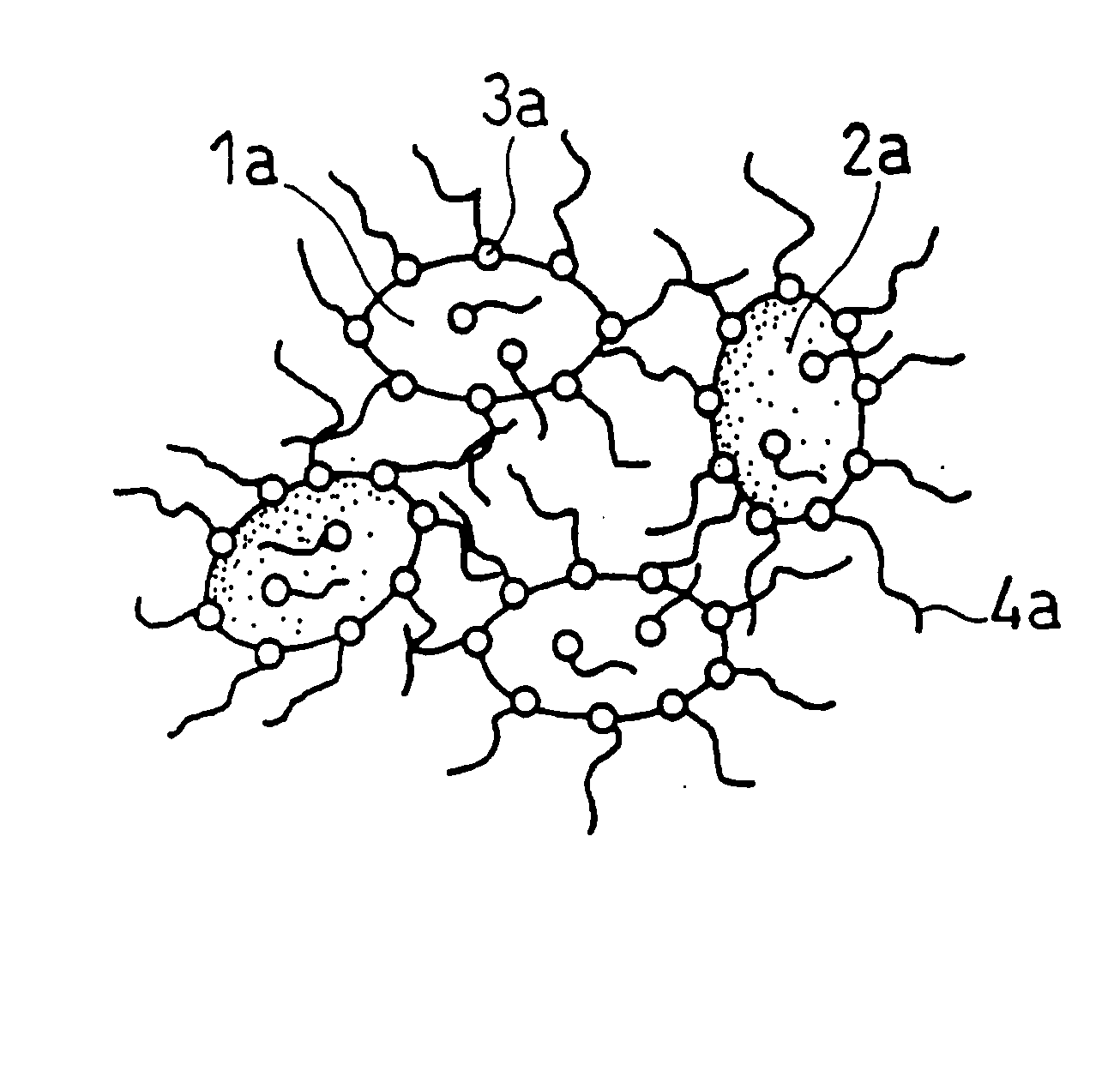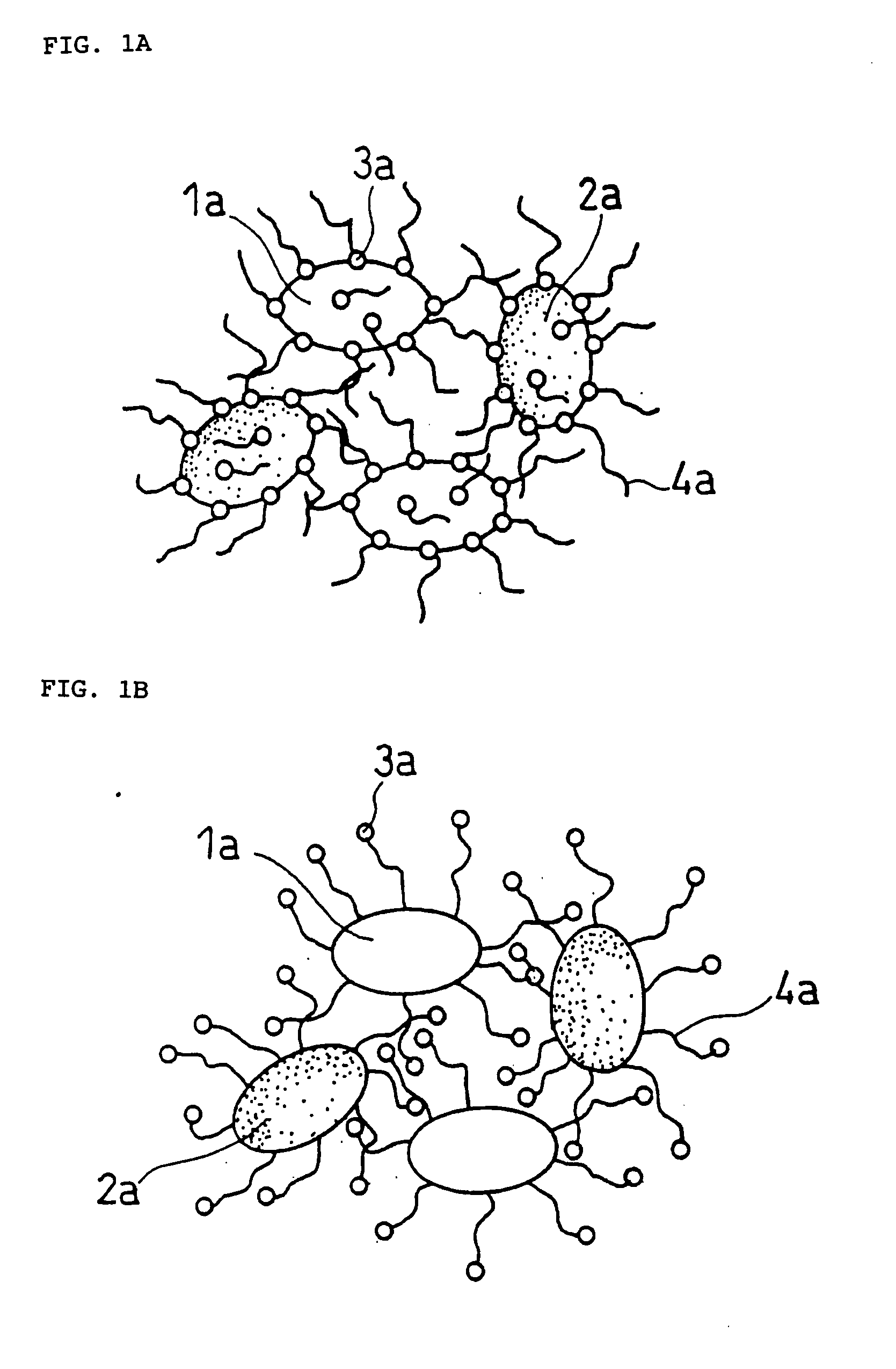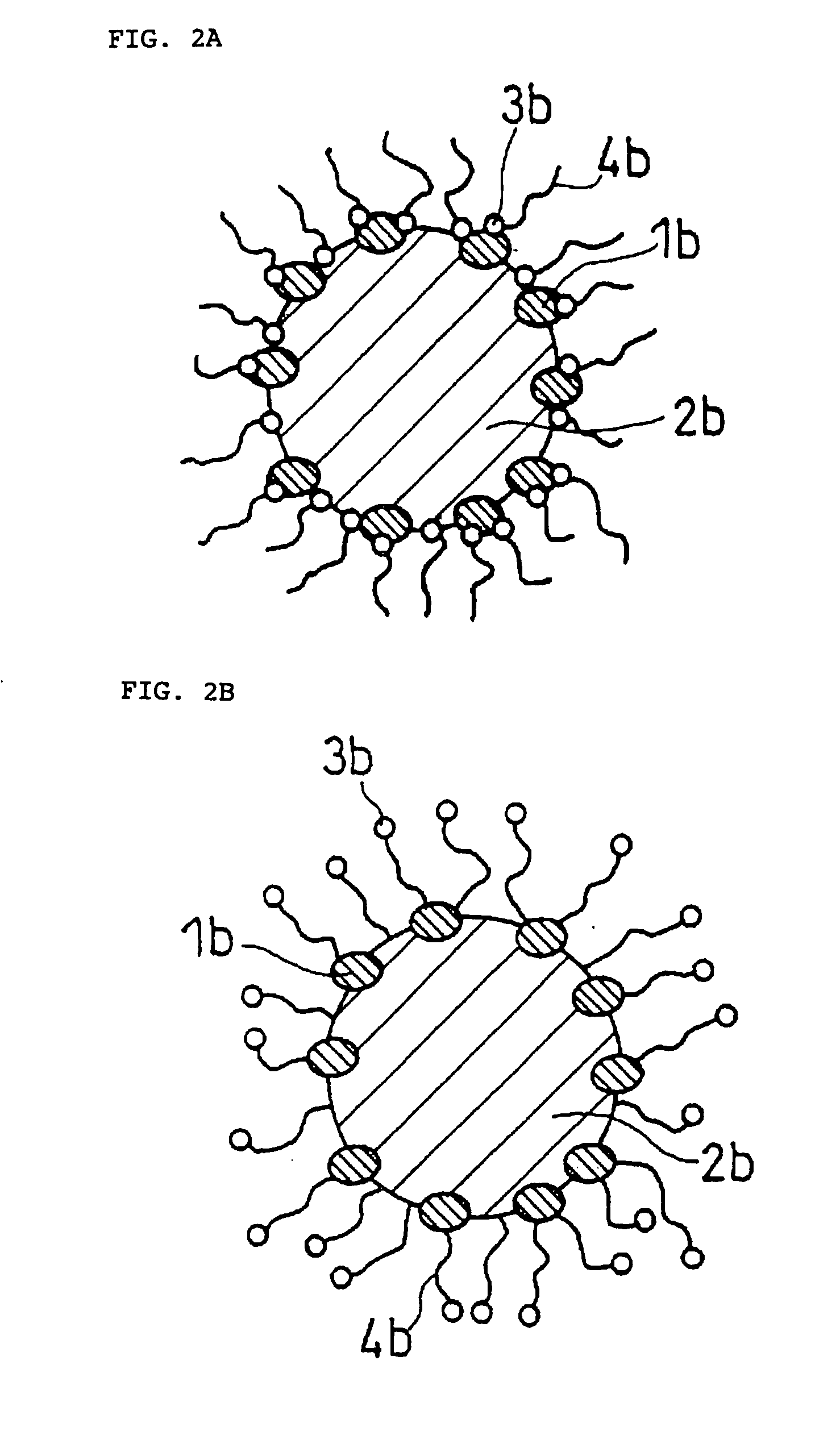Composite Electrode Active Material for Non-Aqueous Electrolyte Secondary Battery or Non-Aqueous Electrolyte Electrochemical Capacitor and Method for Producing the Same
a technology of electrochemical capacitor and secondary battery, which is applied in the direction of liquid electrolytic capacitor, electrochemical generator, cell component, etc., can solve the problems of inability to control the volume change of the material capable of forming an alloy with lithium, the inability to achieve practical use. , to achieve the effect of reducing the reduction of the conductivity of the electrode, high charge/discharge capacity and excellent cycle characteristics
- Summary
- Abstract
- Description
- Claims
- Application Information
AI Technical Summary
Benefits of technology
Problems solved by technology
Method used
Image
Examples
example 1
[0114] Herein, silicon monoxide (SiO) was used as the material A comprising an element capable of forming an alloy with lithium, and artificial graphite was used as the material B comprising carbon.
[0115] 100 parts by weight of silicon monoxide particles (reagent manufactured by Wako Pure Chemical Industries, Ltd.) obtained by grounding and classifying beforehand so as to have a mean particle size of 10 μm and 100 parts by weight of artificial graphite (manufactured by TIMCAL Ltd., SLP30, mean particle size 16 μm) were dry mixed in a mortar for 10 minutes.
[0116] 100 parts by weight of the resultant mixture was mixed with a solution obtained by dissolving 1 part by weight of nickel nitrate (II) hexahydrate (guaranteed reagent) manufactured by Kanto Chemical Co., Inc in deionized water. A mixture of the silicon monoxide particles, the artificial graphite and the nickel nitrate solution was stirred for one hour and then the water was removed with an evaporator to allow nickel nitrate ...
example 2
[0120] The same operations as in Example 1 were carried out except that the amount of artificial graphite with respect to 100% by weight of silicon monoxide particles was decreased to 20% by weight, whereby a composite negative electrode active material B as illustrated in FIG. 1 was obtained. The fiber diameter and the fiber length of the grown nanofibers, the weight proportion of the carbon nanofibers to the whole composite electrode active material and the particle size of the catalyst particles were substantially the same as those in Example 1.
example 3
[0121] 100 parts by weight of artificial graphite (manufactured by TIMCAL Ltd., SLP30, mean particle size 16 μm) and 110 parts by weight of tin acetate (II) (manufactured by Kanto Chemical Co., Inc., first class reagent) are mixed together with an aqueous acetic acid solution. The resultant mixture was stirred for one hour and then the acetic acid and the water were removed with an evaporator to allow tin acetate (II) to be carried on the surface of the graphite particles.
[0122] The graphite particles carrying tin acetate were placed in a ceramic reaction vessel, and the temperature was raised to 400° C. in the presence of argon gas. Thereafter, the temperature was held at 400° C. for 10 hours to reduce the tin acetate (II). The interior of the reaction vessel was then cooled down to room temperature, whereby composite material particles of graphite and tin oxide were obtained.
[0123] As a result of analysis of the composite material particles thus obtained using an SEM, an XRD, an...
PUM
| Property | Measurement | Unit |
|---|---|---|
| particle size | aaaaa | aaaaa |
| particle size | aaaaa | aaaaa |
| particle size | aaaaa | aaaaa |
Abstract
Description
Claims
Application Information
 Login to View More
Login to View More - R&D
- Intellectual Property
- Life Sciences
- Materials
- Tech Scout
- Unparalleled Data Quality
- Higher Quality Content
- 60% Fewer Hallucinations
Browse by: Latest US Patents, China's latest patents, Technical Efficacy Thesaurus, Application Domain, Technology Topic, Popular Technical Reports.
© 2025 PatSnap. All rights reserved.Legal|Privacy policy|Modern Slavery Act Transparency Statement|Sitemap|About US| Contact US: help@patsnap.com



